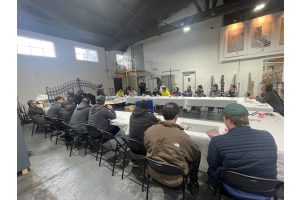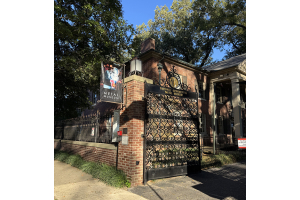Forged in Tradition: The Ironwork Legacy of Yale University
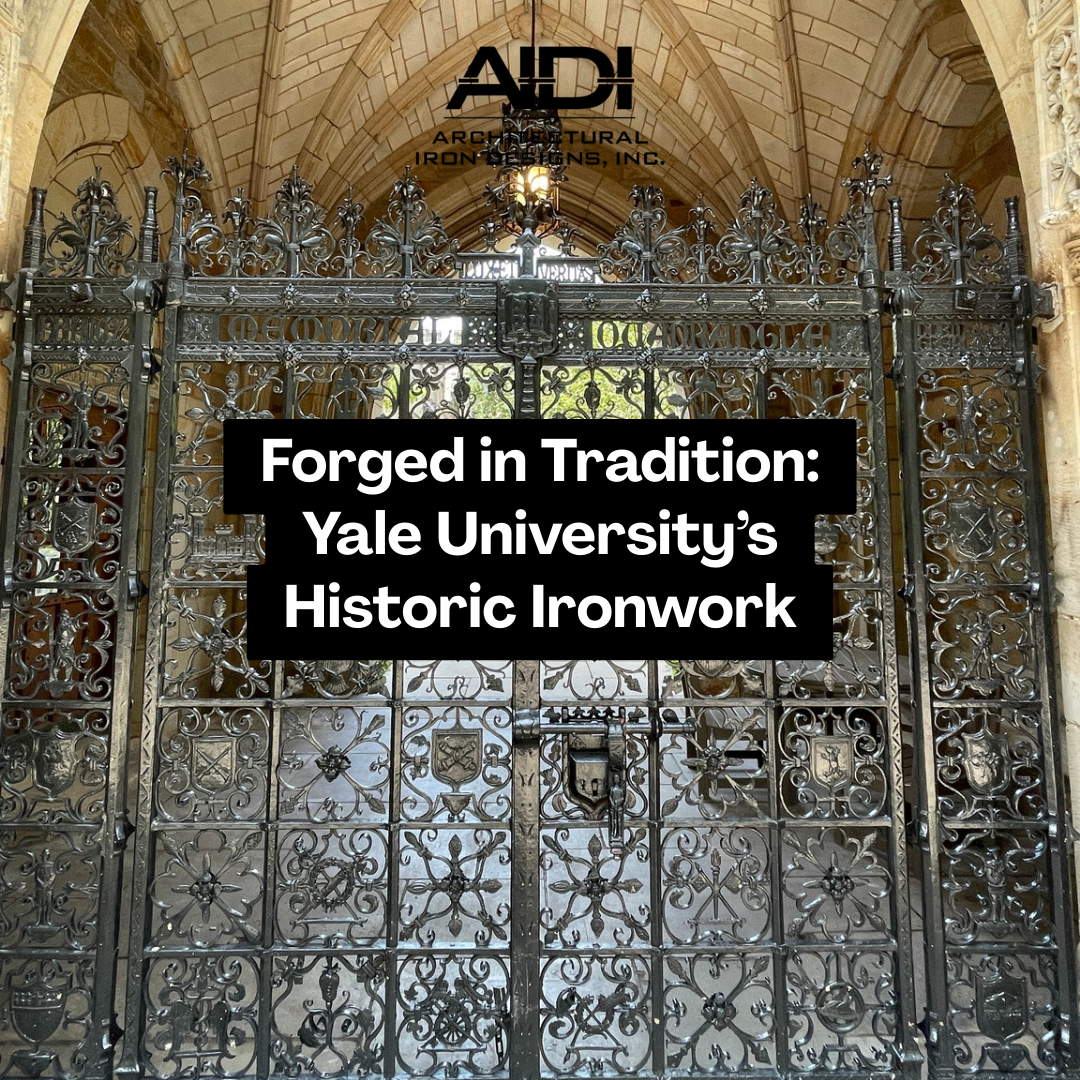
Over the summer, AIDI President Jay Shah took a trip to New Haven, Connecticut and was excited to visit Yale University’s historic grounds. His sister-in-law Dr. Dipti Shah, Research QA Specialist at Yale, drew his attention to the collection of intricate ironwork incorporated into the structures on campus, which led to a deeper dive into the history of Yale’s architecture.
The Yale University campus in New Haven, Connecticut, is recognized for having a distinguished style, largely known as Collegiate Gothic, which emerged in the late 19th century.
The university, founded in 1701 and older than the country itself, features beautiful architectural ironwork that defines the characteristics of the campus aesthetics. Gates, fences, and ornamental hardware contribute both functional and aesthetic value, establishing Yale as an academic institution rooted in tradition.
Take a look at the history, creators, and technical aspects of Yale’s ironwork, with particular focus on the contributions of architect James Gamble Rogers and master blacksmith Samuel Yellin, as well as more recent additions that uphold the aesthetic and give the campus a timeless feel.
Collegiate Gothic at Yale
Between 1918 and 1940, Yale undertook a significant building campaign which would be the most extensive in its history.
Under the management of benefactor Edward S. Harkness, architect James Gamble Rogers designed a series of residential buildings, libraries, and courtyards in a Collegiate Gothic style inspired by Oxford and Cambridge.
While the buildings’ stonework stood out as a visual centerpiece, Rogers understood that details such as ironwork, stained glass, and sculpture would be essential in completing the look of an ancient, storied institution.
Check Out Ornamental Parts with Collegiate Gothic Aesthetics
The Big Name: Samuel Yellin
The front-man responsible for Yale’s wrought-iron program was Samuel Yellin, the most renowned American blacksmith and metalwork designer of the time. Based in his hometown of Philadelphia, Pennsylvania, Yellin operated a large workshop, employing dozens of skilled smiths. This allowed him to maintain individuality while meeting the scale and complexity of major institutional projects.
At Yale, Yellin’s contributions include:
Memorial Quadrangle Gate
Located beneath Harkness Tower, this monumental wrought-iron gate features patriotic symbols like eagles, soldiers, and insignia of the armed services. The gate demonstrates both structural integrity and ornamental delicacy.
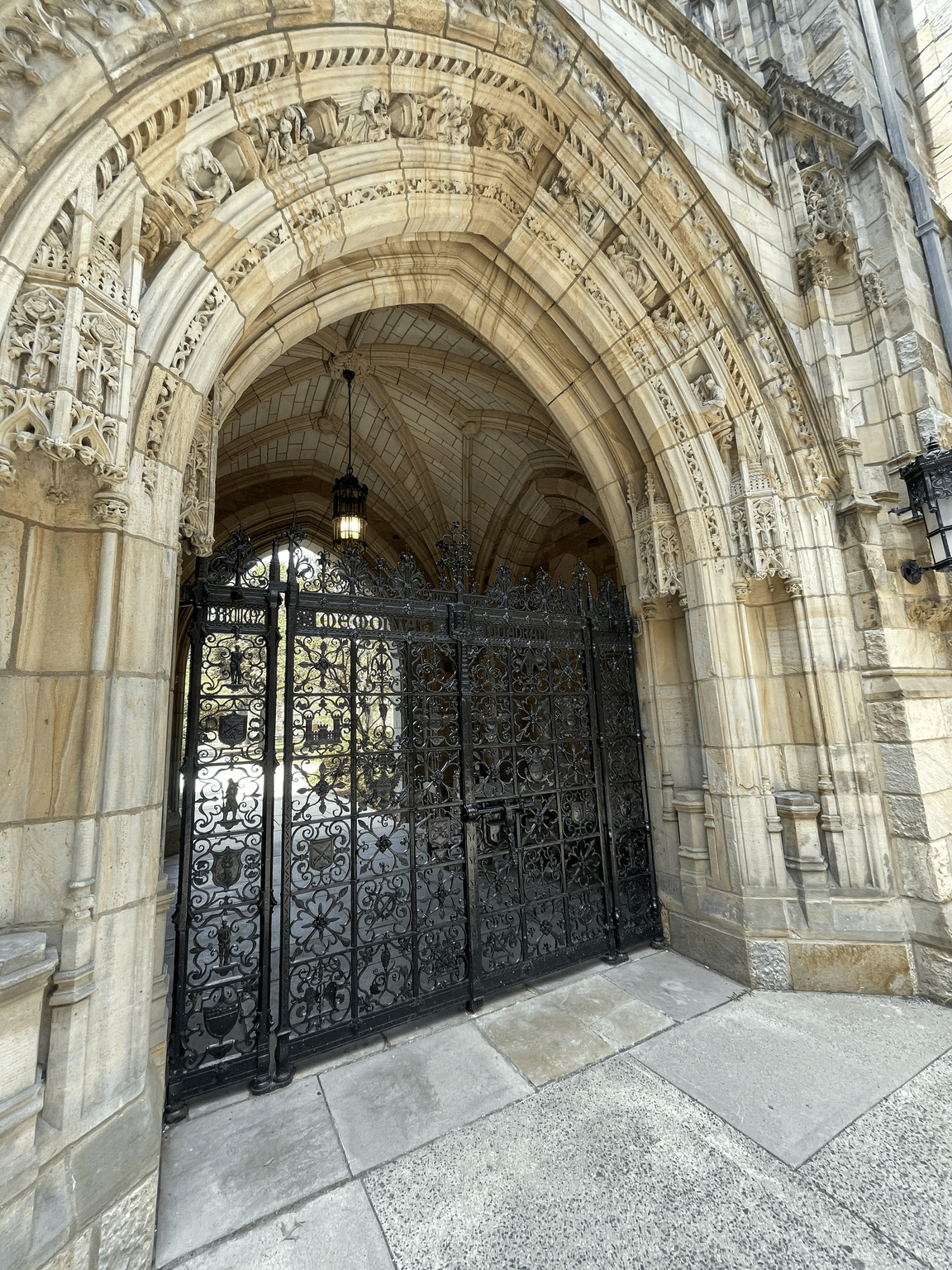

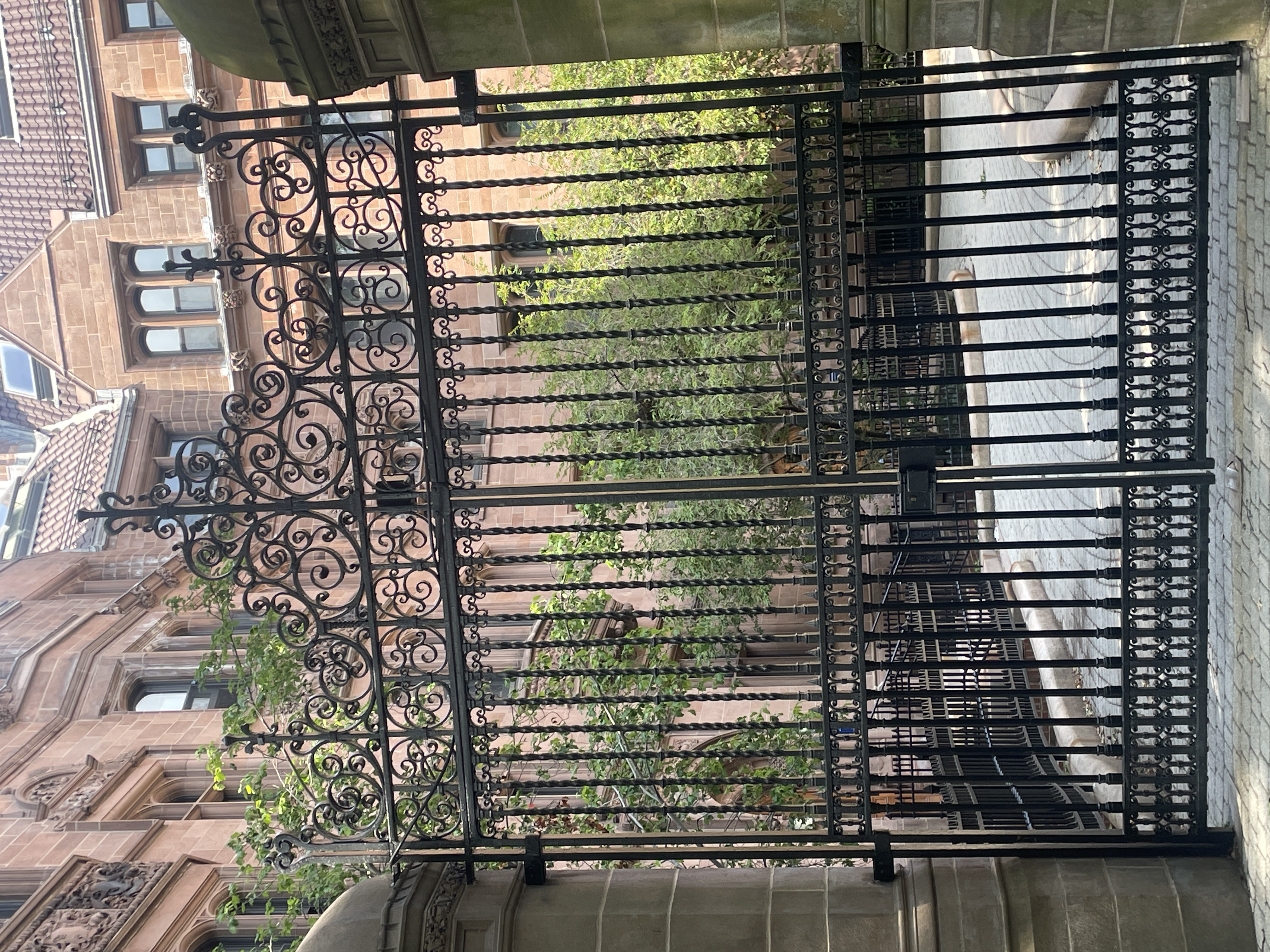

Beyond Yellin: Continuing the Craft
While the majority of Yale’s wrought-iron pieces were forged during the 20th-century collaboration between James Gamble Rogers and Samuel Yellin, the university has continued to incorporate ironwork in its more modern additions.
The most significant example of this was during Yale’s 21st-century expansion, when two new residential colleges — Benjamin Franklin College and Pauli Murray College — were completed in 2017.
Sterling Memorial Library
The library’s interior includes wrought-iron elevator doors and ornamental grilles and screens. These works feature intricate tool marks preserved in the metal surface, emphasizing hand craftsmanship within a modern building.


Residential Colleges and Quadrangles
Across Rogers’ courtyards, Yellin created entry gates, window grilles, and ornamental transoms. These works often incorporated symbolic motifs referencing Yale’s history, the liberal arts, and the personal arms of patrons.
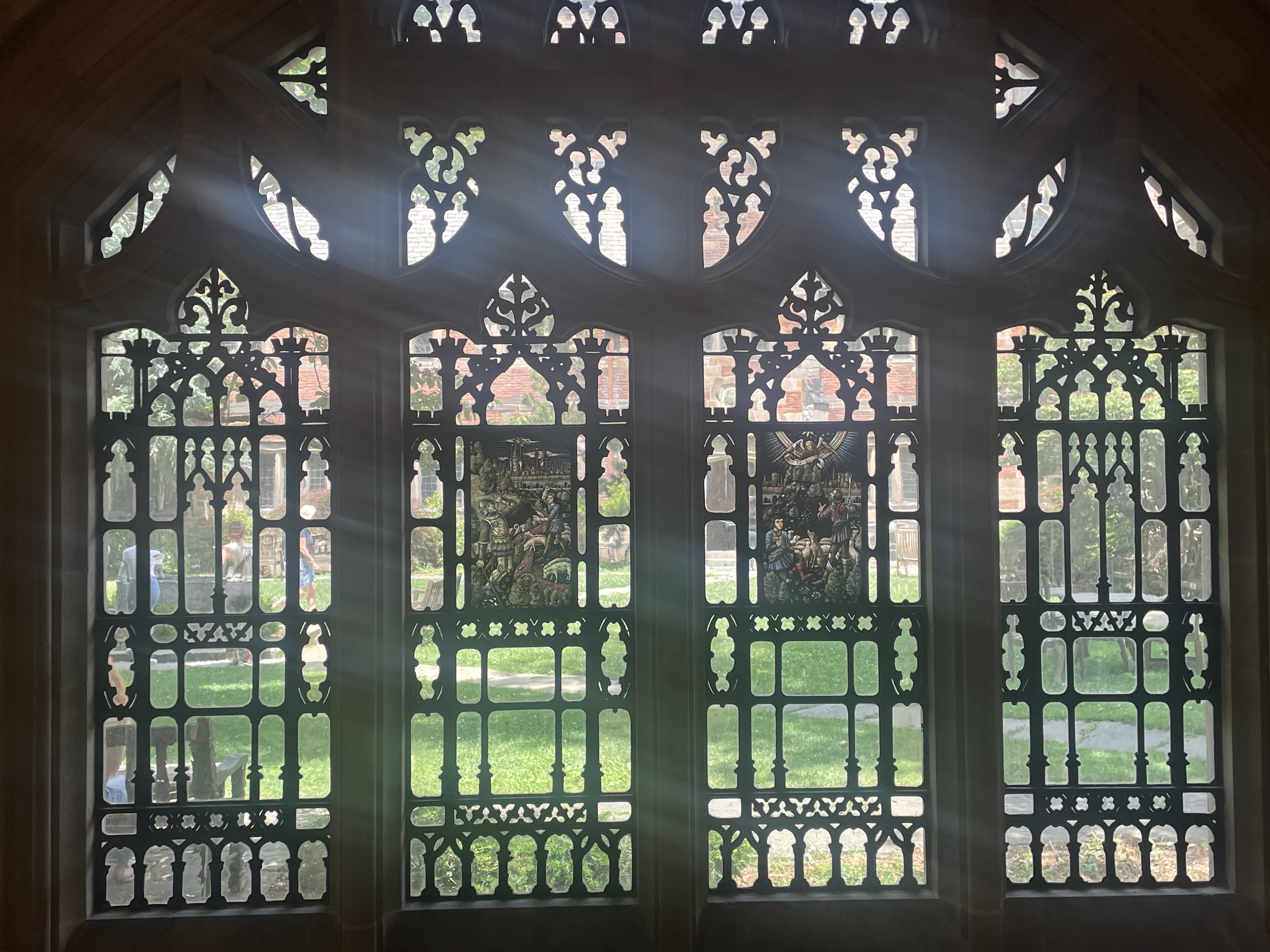

The design, led by Robert A.M. Stern Architects (RAMSA), sought to extend the presence of Yale’s Collegiate Gothic tradition with a modern twist. As with Rogers’ original colleges, the ironwork was considered essential to creating an authentic sense of enclosure, threshold, and continuity.
To achieve this, Yale commissioned Covax Design, a modern metalworking firm specializing in architectural ironwork, to fabricate a series of custom entrance gates and grilles.
In this way, the gates of Benjamin Franklin and Pauli Murray Colleges serve not merely as functional hardware but as contemporary sequels to Yellin’s legacy, proving that wrought iron remains a vital medium for expressing Yale’s architectural continuity, even as the campus evolves throughout the 21st century.
The Importance of Architecture in Historical Settings
The ironwork at Yale University is a huge part of its visual identity. The ornamental metal elements function not only as practical security measures but also as historical symbols. The sophisticated and timeless atmosphere of a University like Yale is simply an aesthetic created using the right material and design.
So what does that mean for you? You could recreate the same look for your customers by finding inspiration from the work of architects, fabricators, and blacksmiths that came before you. We can help you achieve the look you’re going for. Reach out to us today with your ornamental gate and fence needs.












